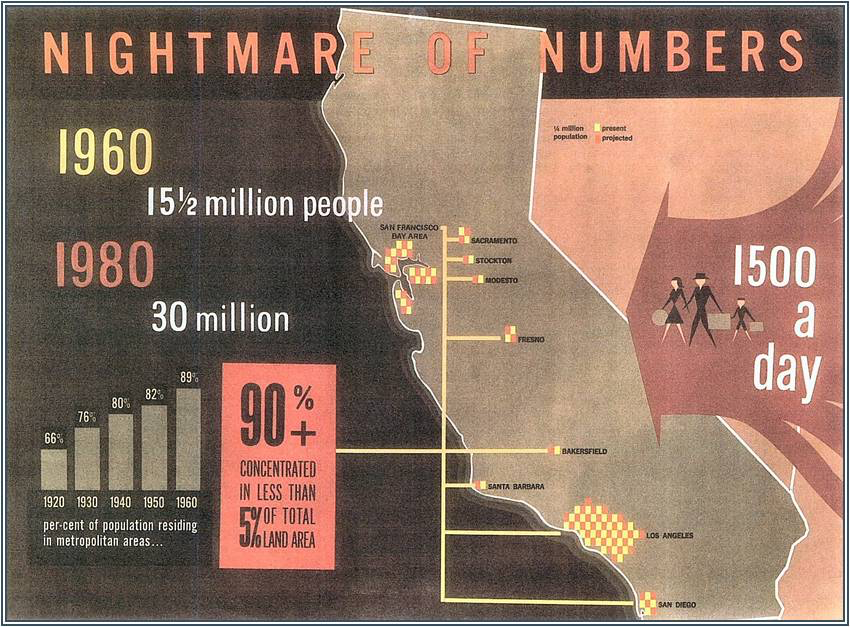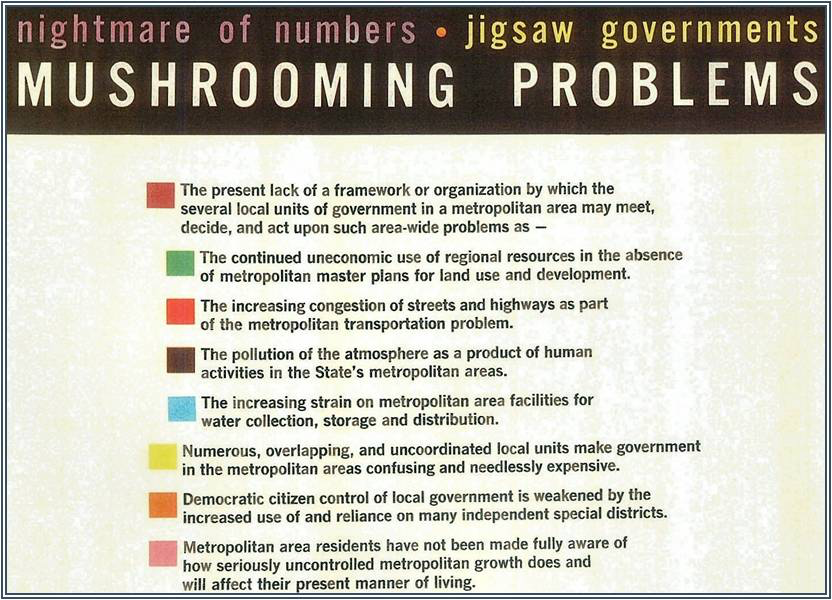About Us
History
LAFCOs were created in 1963 by Assembly Bill 1662 (John Knox) with the initial tasks of reviewing and approving/disapproving proposals for the incorporation of new cities and creation of new special district in all 58 counties in California. The impetus leading to LAFCOs' creation, however, began several years earlier when Governor Edmund Brown created the Commission on Metropolitan Area Problems and tasked this blue-ribbon group with making recommendations to coordinate the management of statewide growth and development. Markedly, at the time, county governments were largely empowered to form and expand cities and special districts without any substantive oversight. The prior decade highlighted the need for coordinated management as California’s population increased between 1950 and 1960 by more than half from 10.6 million to 15.9 and approximately 100 cities and special districts were formed, often with illogical and overlapping boundaries. It was also projected at the time that California's growth would double to 30 million by 1980. The Commission on Metropolitan Area Problems presented its findings in 1961 and recommended, among other items, a single statewide commission be created to regulate the formation and subsequent development of all cities and special districts within California. Locally elected officials responded disfavorably to this recommendation fearing a substantive loss in controlling new growth and development and began negotiating a compromise with the Governor's Office and Legislature. This negotiation ultimately led to a unique compromise that remains largely intact today in which the Legislature sets policies and procedures for managing the formation and post-formation development of local agencies highlighted by the directive to curb sprawl and protect agriculture while delegating implementation authority to locally elected officials serving on local agency formation commissions or "LAFCOs."



